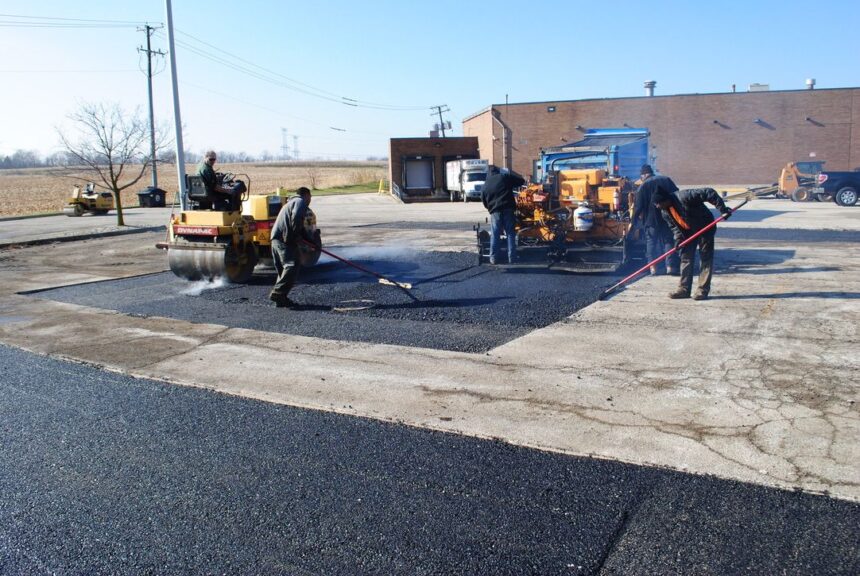Maintaining outdoor surfaces like driveways, parking lots, and pathways is essential for preserving their longevity, ensuring safety, and maintaining curb appeal. These surfaces endure constant exposure to weather, vehicles, and heavy foot traffic, all of which can lead to wear and tear over time. However, adopting proper maintenance practices can help property owners prolong the life of their surfaces and avoid costly repairs. This guide offers practical tips and insights for effective surface maintenance.
The Importance of Surface Maintenance
Outdoor surfaces serve both functional and aesthetic purposes for properties. Regular upkeep prevents small problems from escalating into major damages, saving time, money, and effort in the long run. Here are some key reasons why maintaining surfaces should be a priority:
Enhancing Safety
Neglected surfaces filled with cracks, potholes, or uneven patches can pose serious safety hazards. These issues increase the risk of trips, slips, and falls for pedestrians, as well as potential tire or vehicle damage. Proper maintenance removes such risks, ensuring a safe environment for everyone.
Preserving Property Value
Well-maintained driveways, pathways, and parking lots enhance the overall impression of a property. Crumbling or damaged surfaces can create a negative visual impact, potentially lowering property value. Regular care keeps these areas clean, smooth, and visually pleasing.
Reducing Long-Term Costs
Addressing signs of wear early can prevent more significant, expensive repairs in the future. For example, sealing a few small cracks costs far less than replacing an entire surface that deteriorated due to ignored damage.
Cleaning and Preventative Measures
Routine cleaning and proactive steps are at the foundation of good surface maintenance. Keeping these areas clean prevents debris and substances from causing progressive damage.
Regular Sweeping
Debris like dirt, leaves, and small stones can accumulate on outdoor surfaces, especially in high-traffic areas. Sweeping these areas regularly not only enhances their appearance but also prevents particles from getting compacted into small surface cracks.
Washing Away Stains
Substances like oil, grease, and fuel can stain outdoor surfaces and potentially weaken their material over time. Clean up spills as soon as possible using appropriate cleaning solutions. Power washing is another effective method for removing persistent stains and grime buildup.
Seasonal Maintenance
Seasonal maintenance is critical to protecting surfaces from damage caused by changing weather conditions. During winter, use de-icing agents carefully to avoid chemical damage, and remove snow promptly to prevent moisture penetration. Summer heat can also lead to surface warping, so use protective coatings to mitigate extreme heat exposure.
Addressing Cracks and Potholes
Cracks and potholes are common issues for outdoor surfaces, but they don’t have to lead to full surface replacement if addressed early.
Seal Small Cracks Immediately
Cracks may seem minor, but they often allow moisture to seep into the foundation, causing further deterioration. Use crack fillers or sealants to close these gaps before they expand. This simple step helps maintain structural integrity over time.
Repair Potholes Quickly
Potholes not only affect the surface’s functionality but also create hazards for vehicles and pedestrians. Filling and leveling potholes promptly ensures safety and prevents debris from accumulating within these depressions, which can worsen the damage.
Invest in Sealcoating
Sealcoating is a preventive measure that protects surfaces from weather, chemicals, and general wear. This process acts as a barrier, reducing the likelihood of cracks and potholes forming. For most surfaces, it’s recommended every two to three years to maintain optimal protection.
Managing Drainage to Prevent Water Damage
Water is one of the most significant contributors to surface damage, especially during rainy seasons. Poor drainage allows water to pool, leading to erosion, cracks, and uneven surfaces.
Ensure Sufficient Slope for Drainage
The design of outdoor surfaces should include a gentle slope to direct water away from driveways, pathways, and parking lots. Pooled water accelerates wear and weakens the surface over time.
Clean Drains and Gutters Regularly
Clogged drains or gutters can cause water to overflow onto surfaces, increasing the risk of damage. Regularly inspect and clean these parts of the drainage system to keep water flowing properly.
Scheduling Professional Assessments
While property owners can handle routine maintenance, professional assessments are invaluable for catching hidden problems or handling larger repair jobs that require specialized skills.
The Role of Experts
Professional inspections ensure thorough evaluations of surface conditions, identifying potential weak spots or underlying structural issues not visible on the surface. Experts utilize advanced tools to deliver effective solutions, minimizing the risk of future damage.
Choosing the Right Service Provider
It’s important to select experienced and reliable professionals for your surface maintenance needs. For example, asphalt paving contractors in Ogden, UT are equipped with the expertise and tools necessary to provide comprehensive paving solutions, ensuring smooth and durable surfaces.
Long-Term Maintenance Strategies
Consistency is key when it comes to preserving outdoor surfaces. Developing a maintenance plan helps property owners stay on top of inspections, repairs, and preventative measures.
Establish a Maintenance Schedule
Create a regular schedule for cleaning, inspecting, and repairing surfaces. Monthly inspections can help identify developing cracks or drainage issues, while annual sealcoating adds a protective layer.
Monitor Environmental Impact
Be mindful of the surrounding environment and how it affects your surfaces. For instance, overhanging branches may drop debris onto parking lots or driveways, necessitating more frequent cleaning.
Don’t wait until small issues become major problems. Take proactive steps to preserve your property’s appeal, safety, and value by implementing a consistent surface maintenance plan today.
